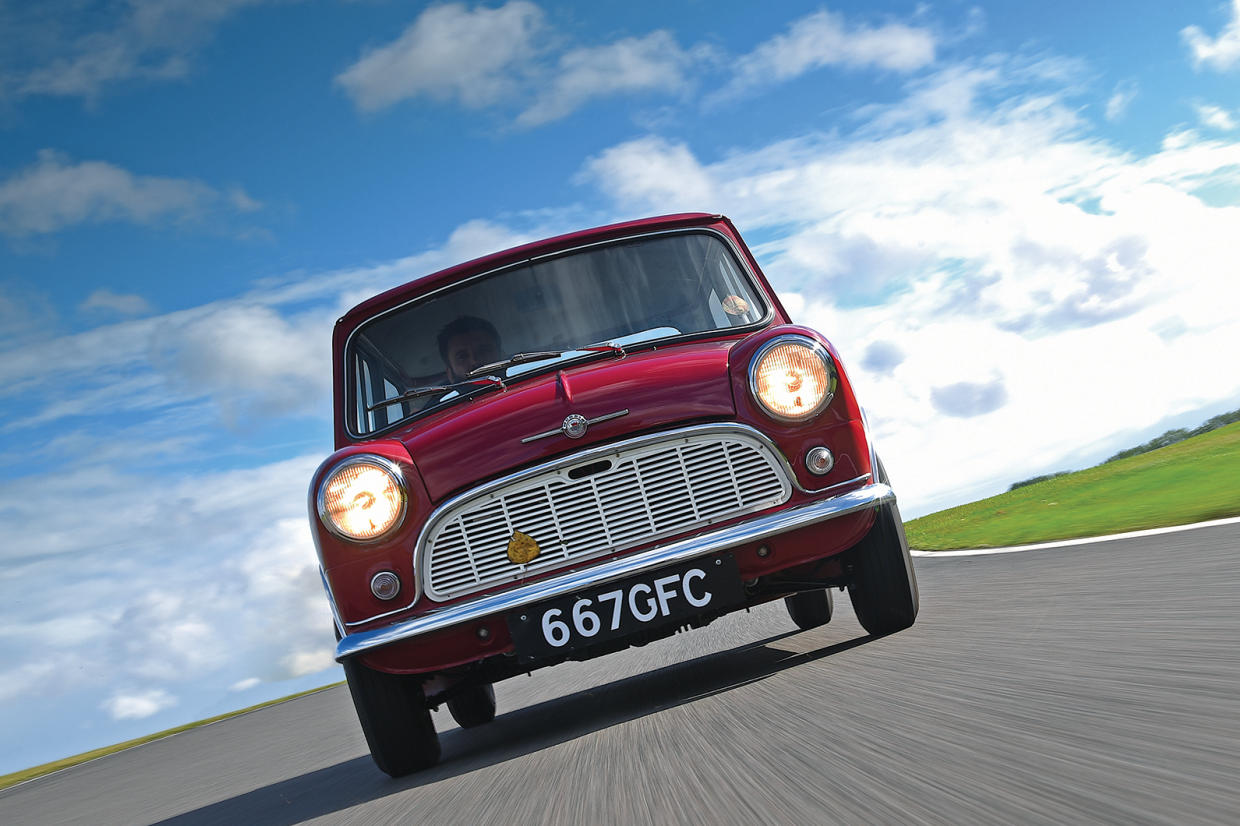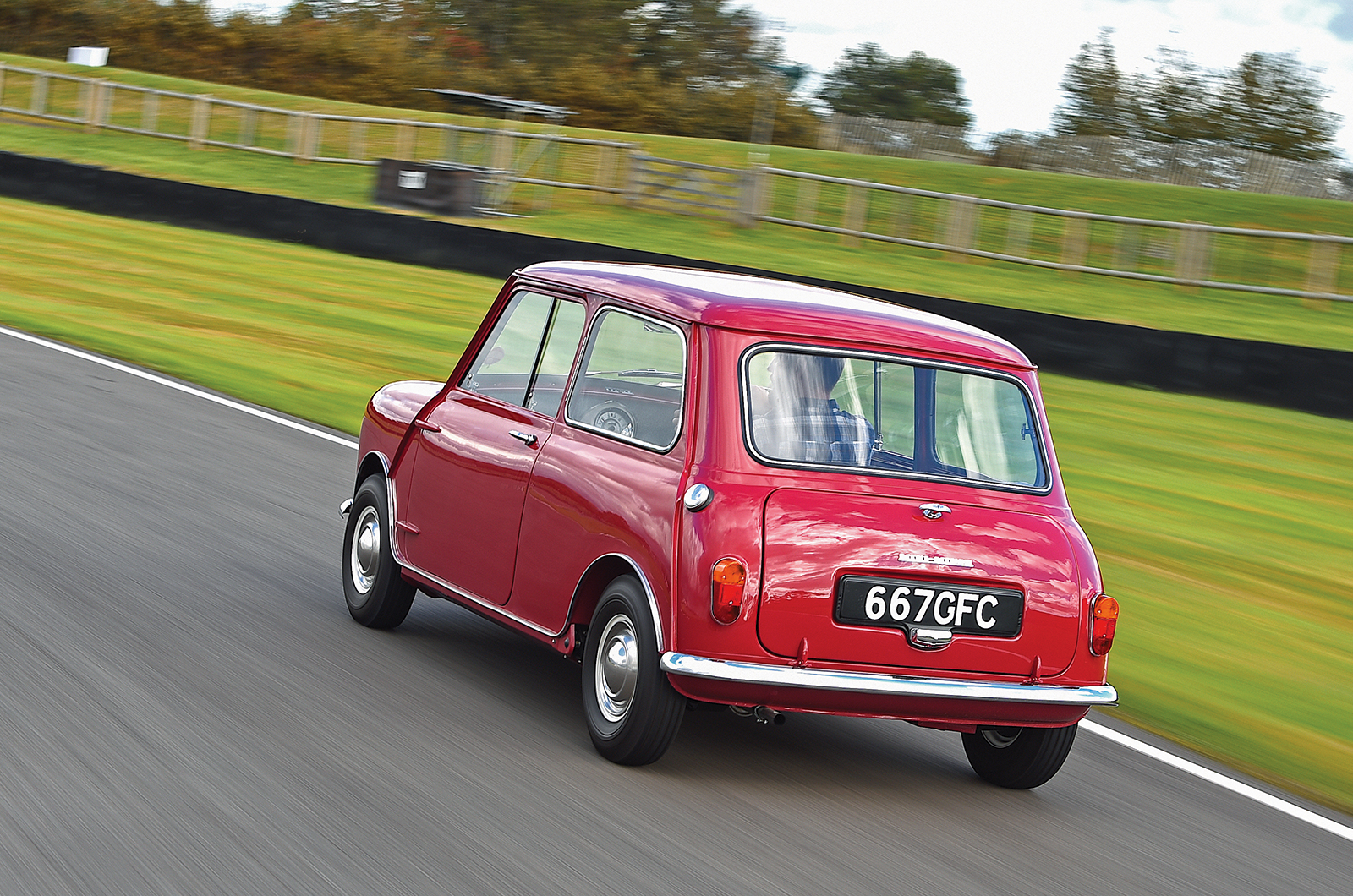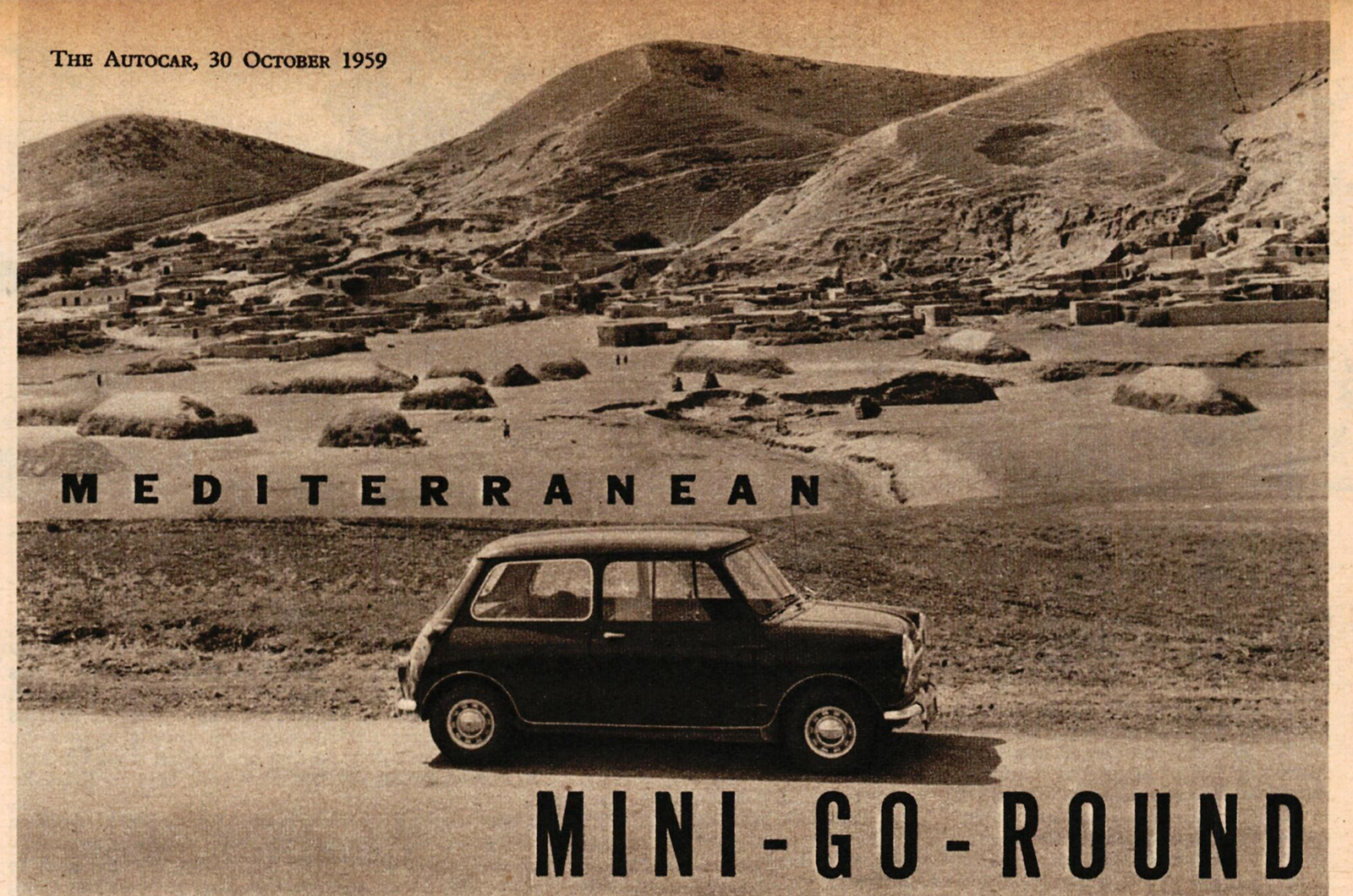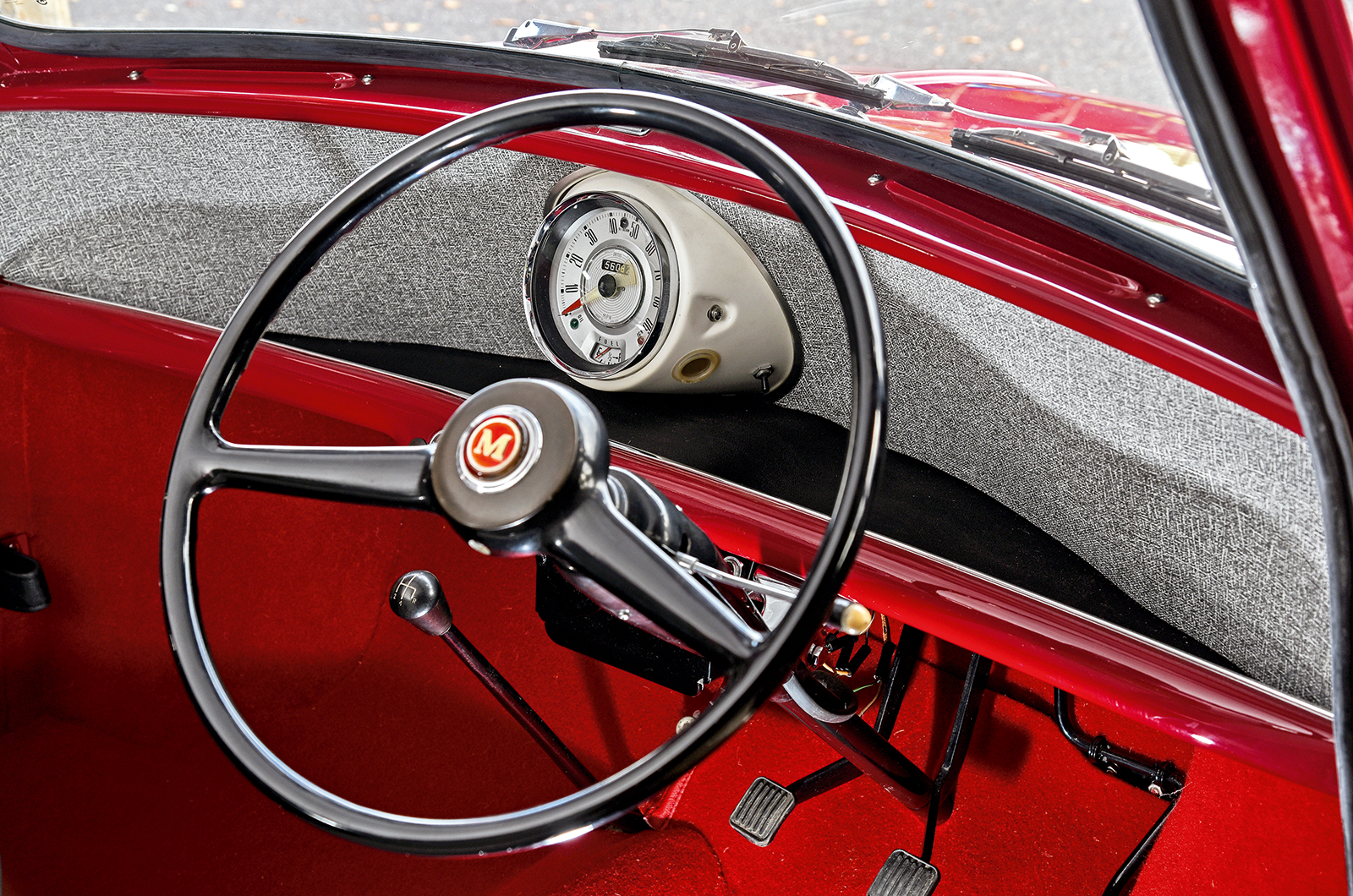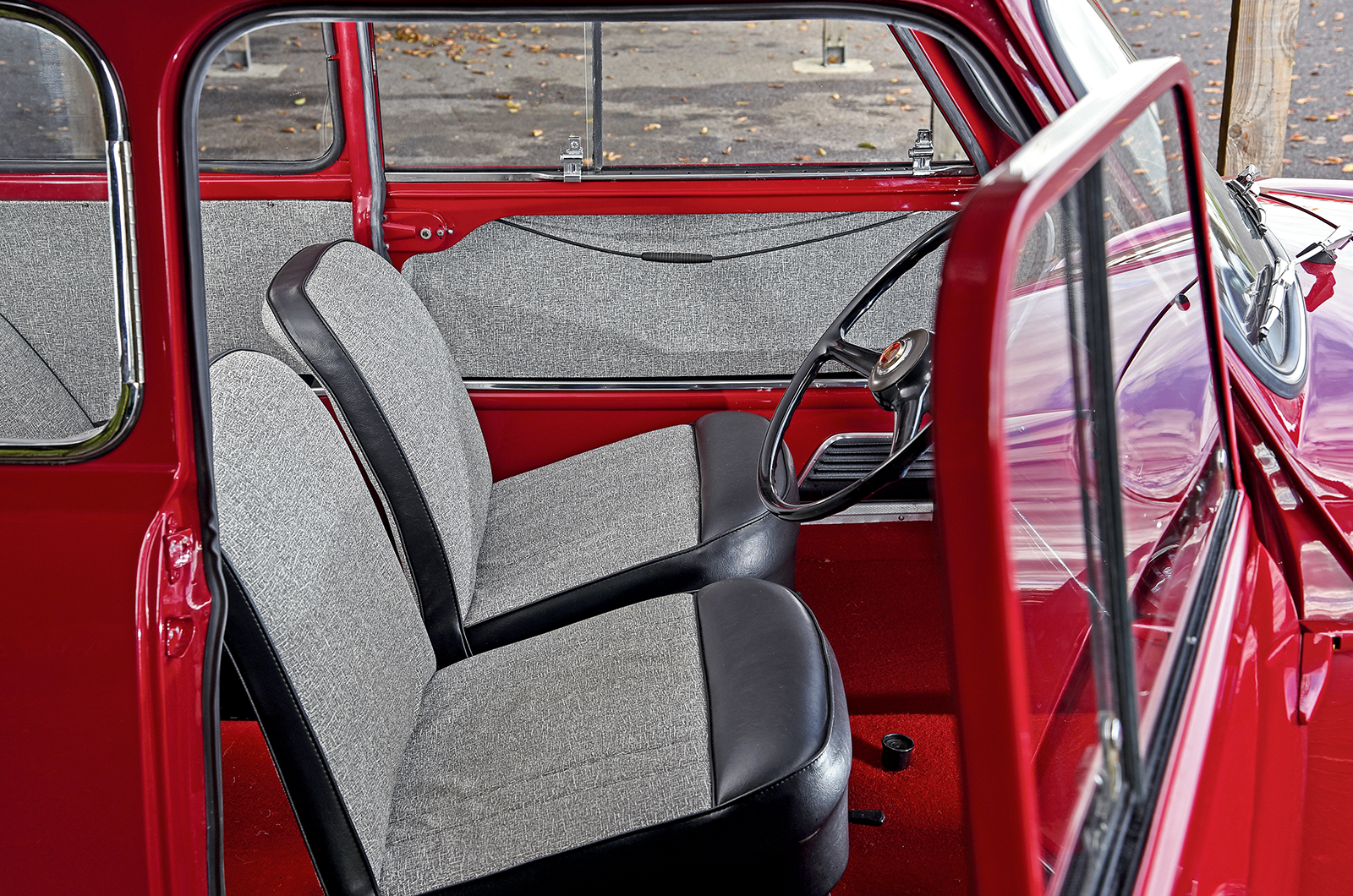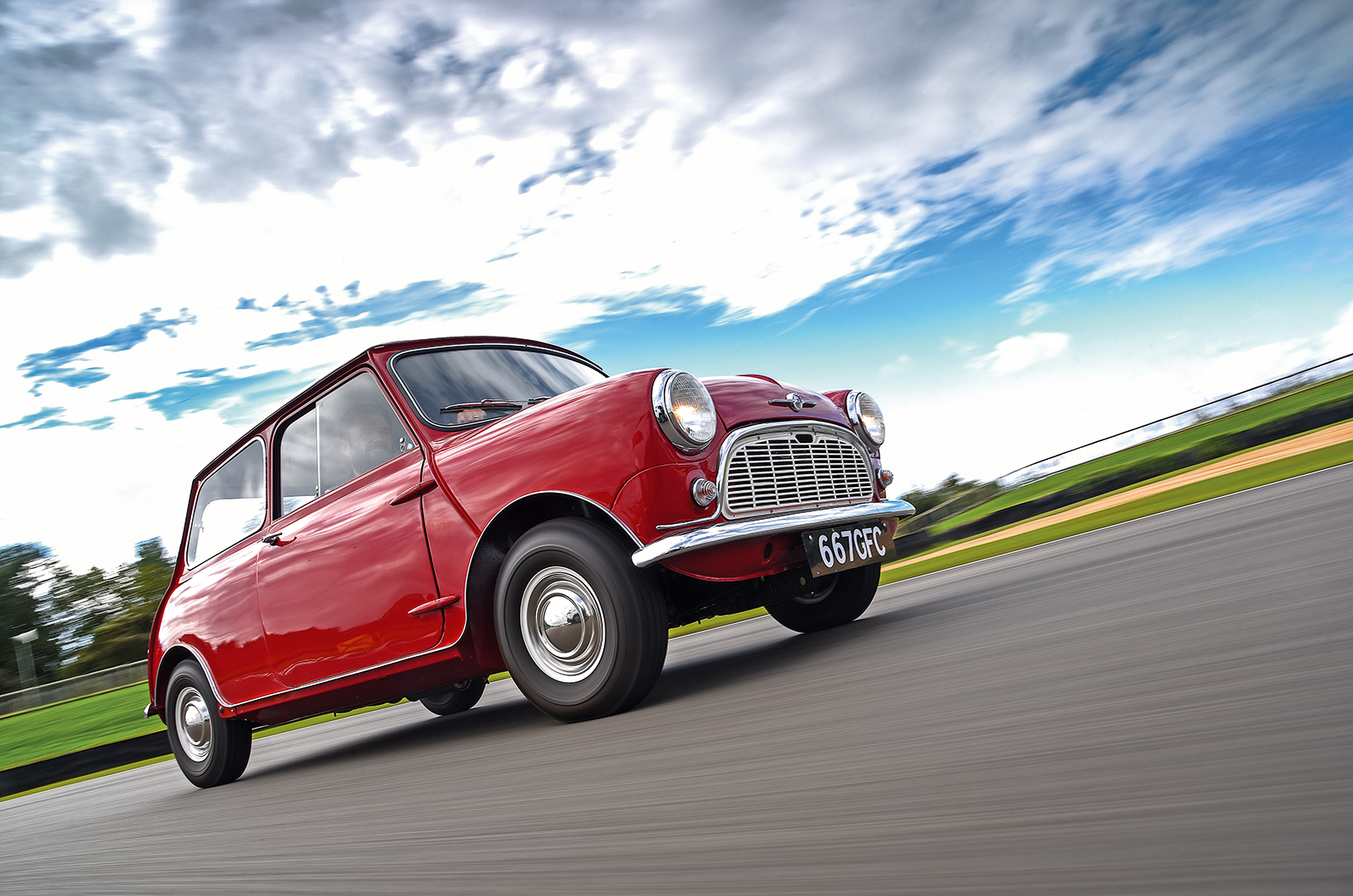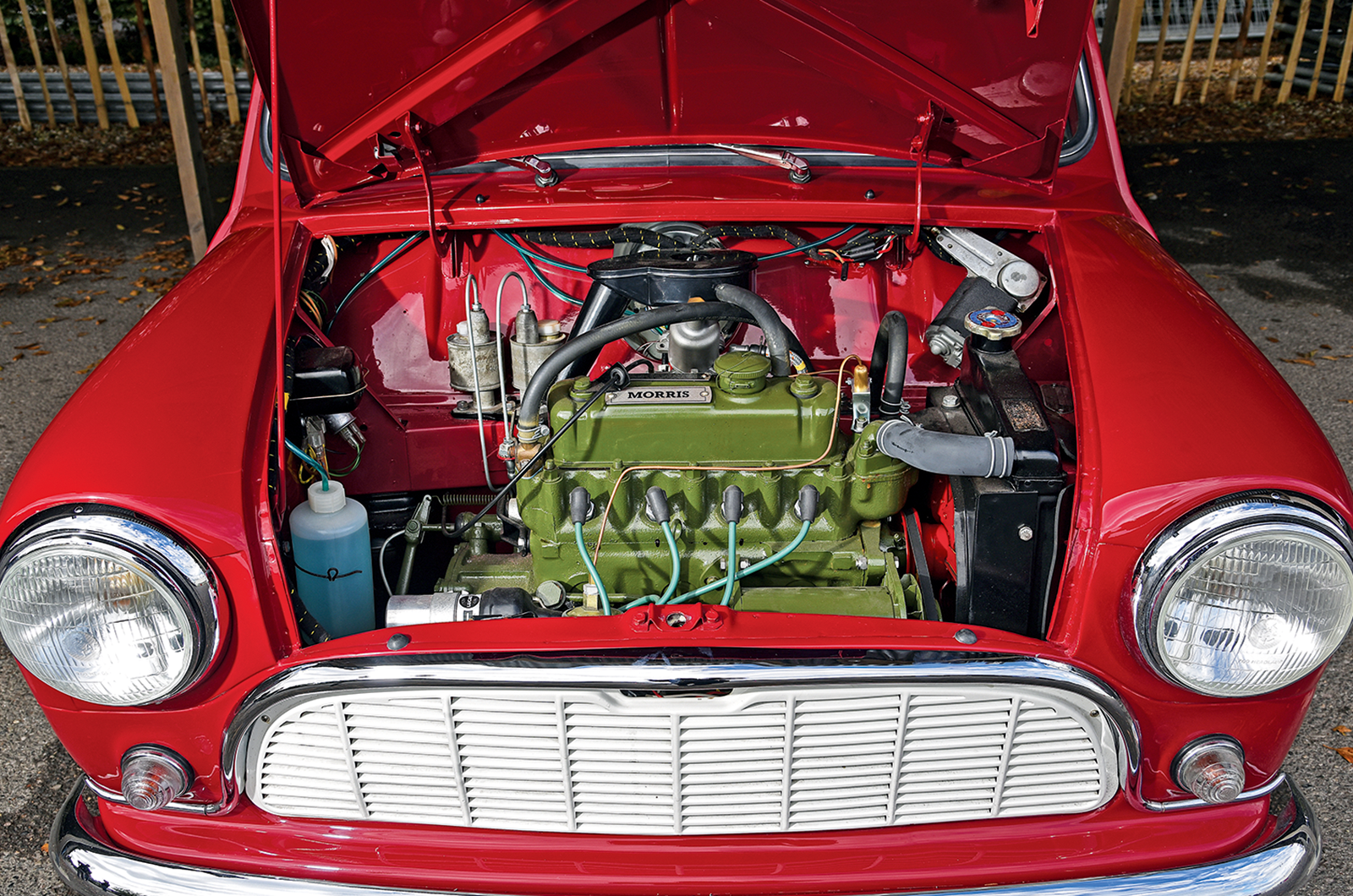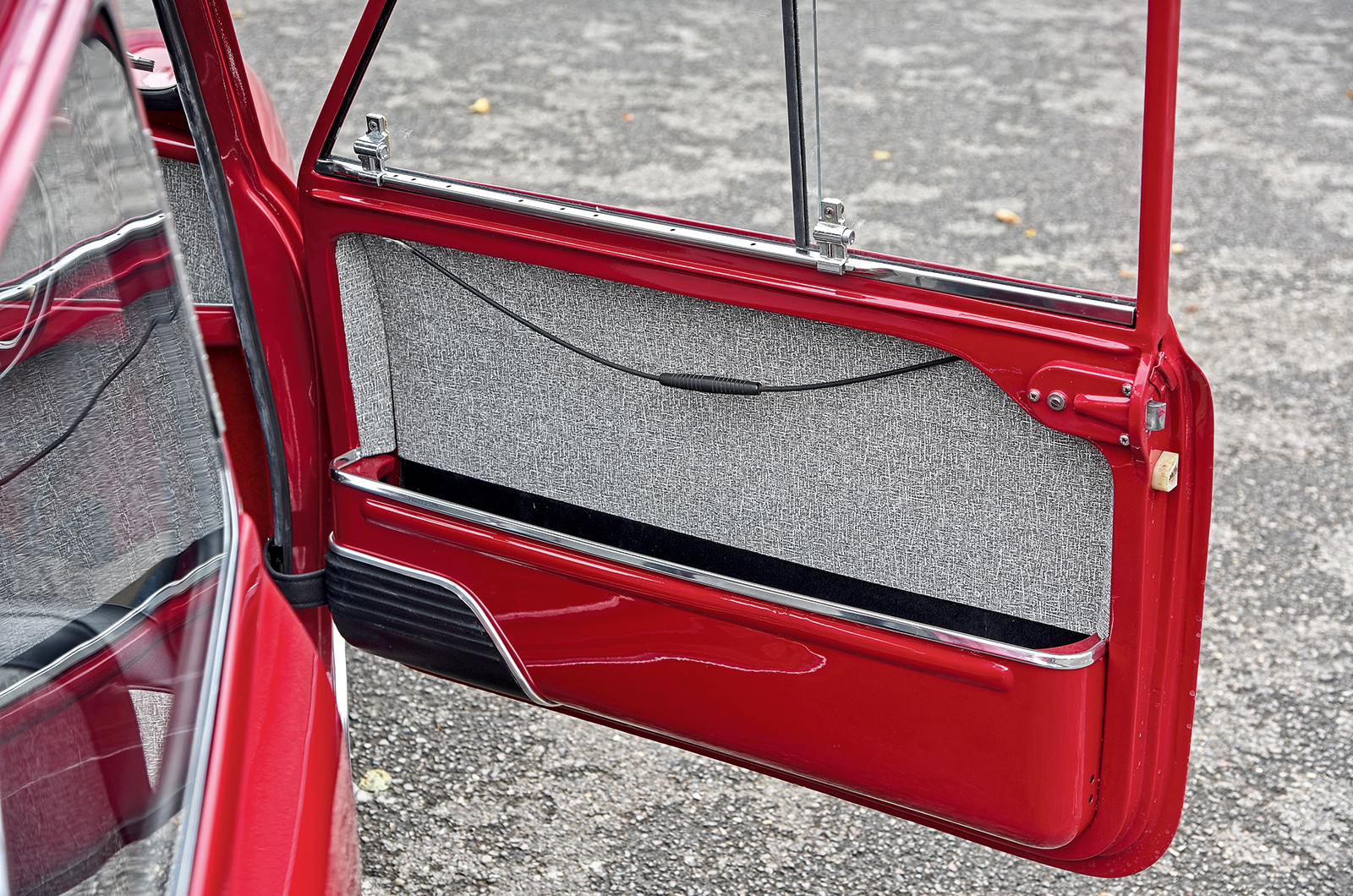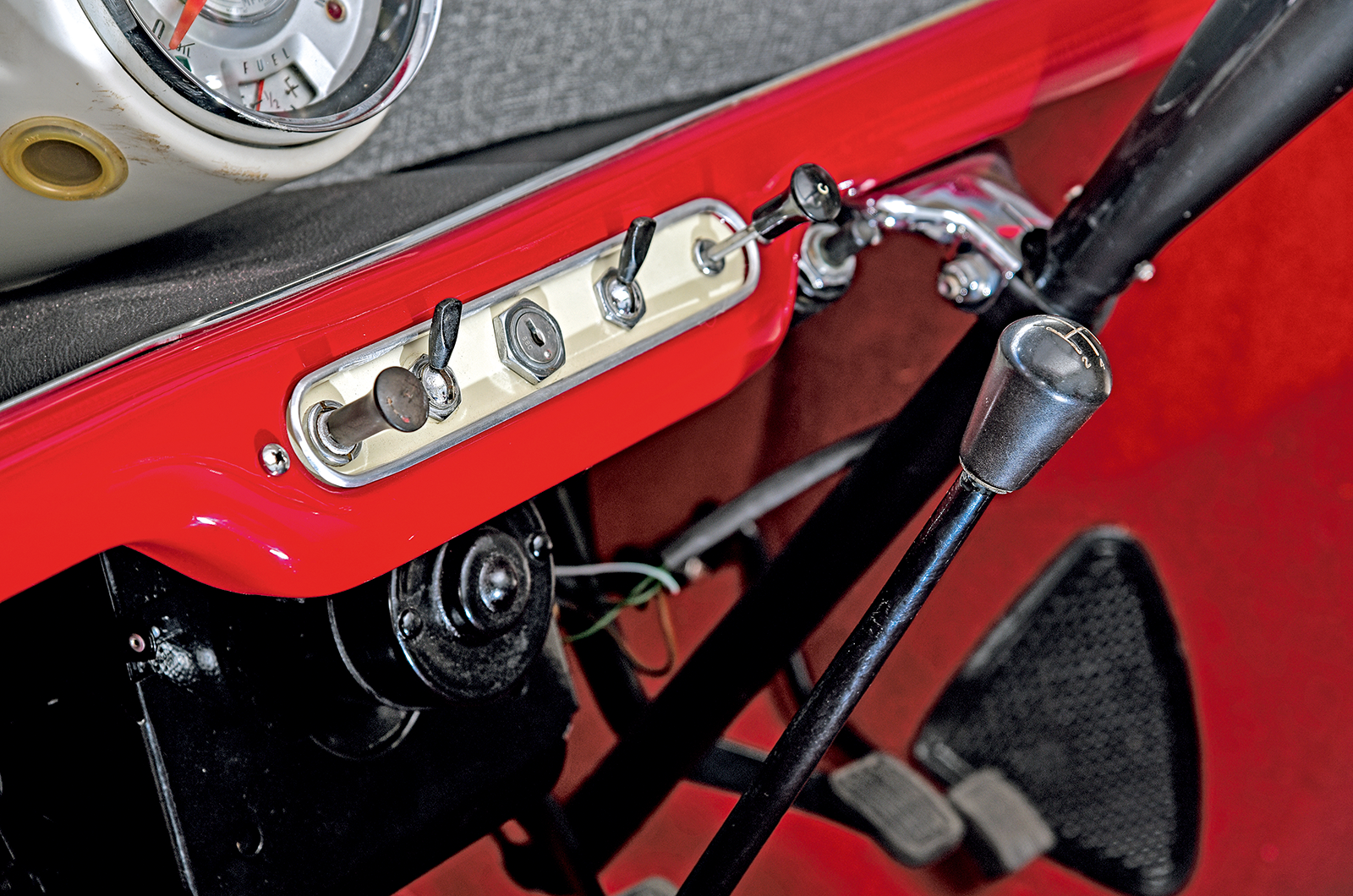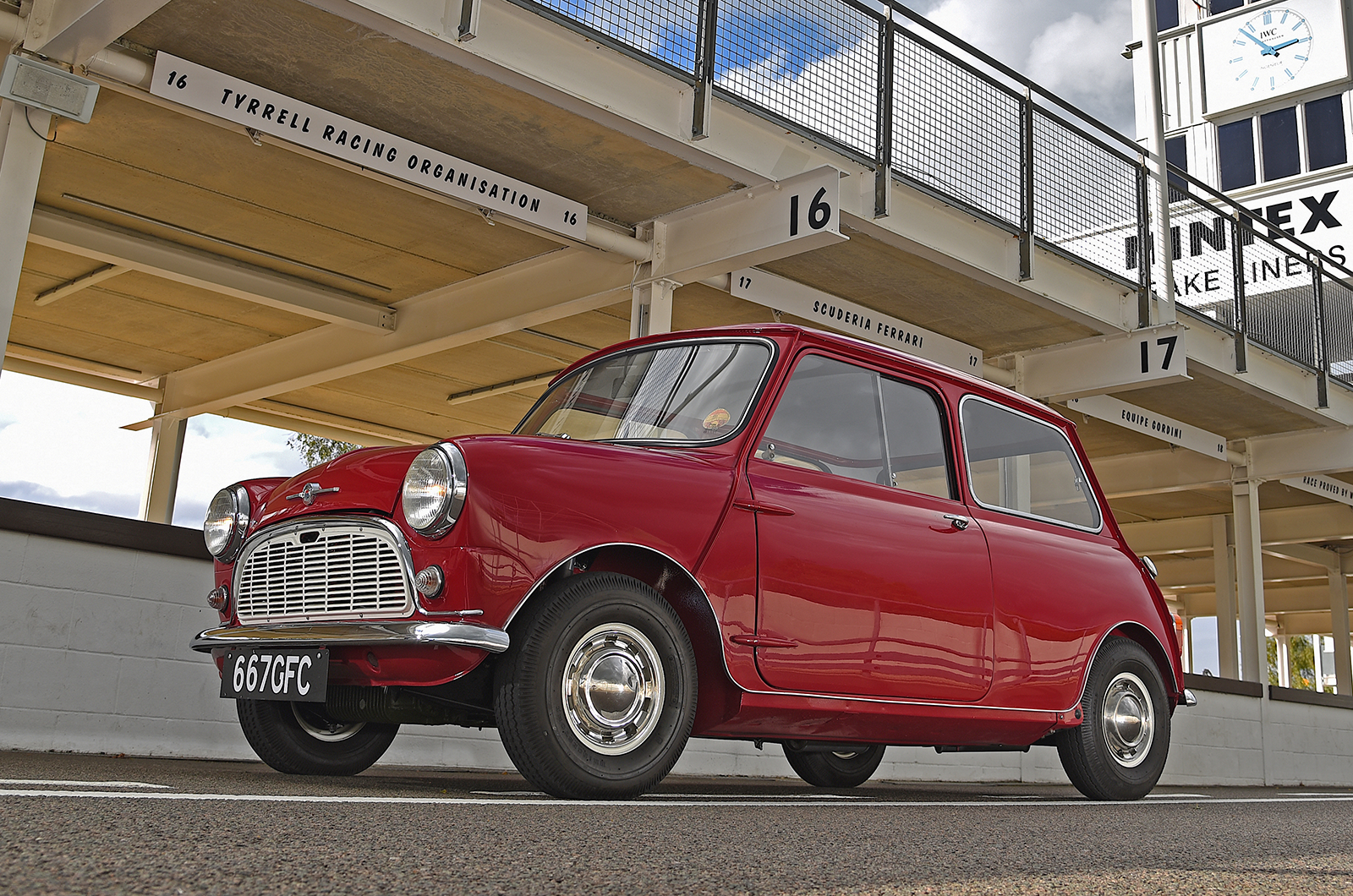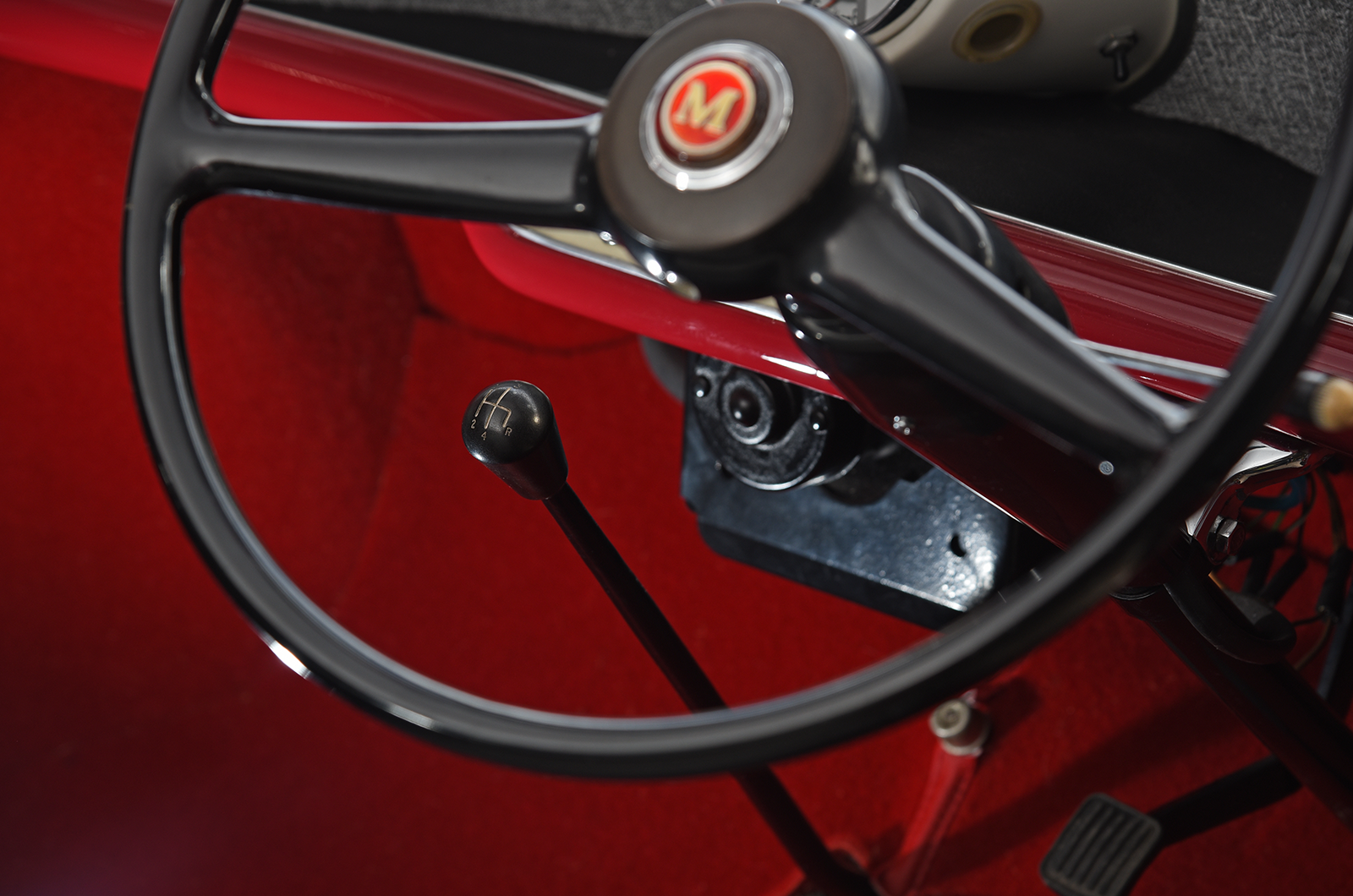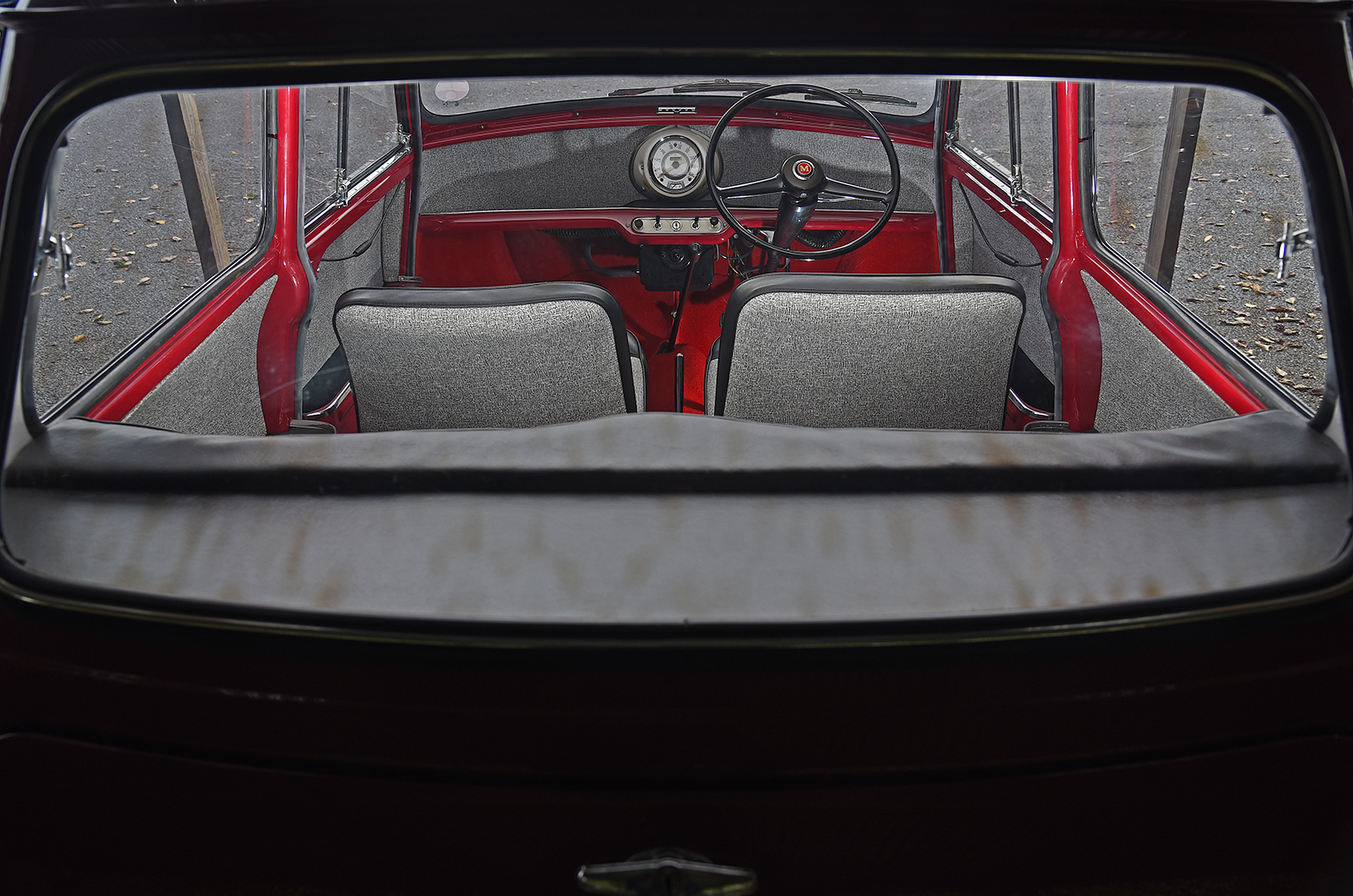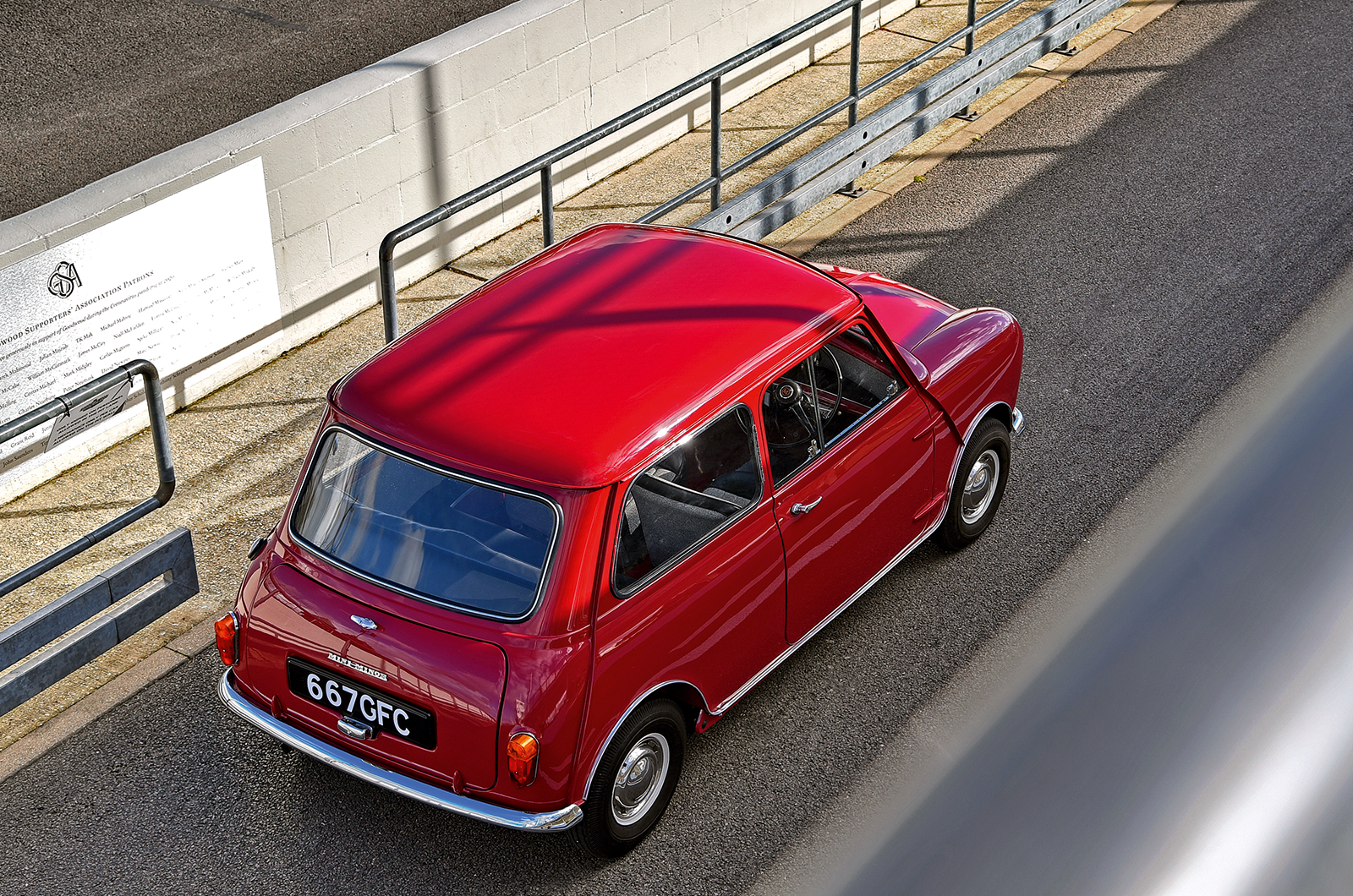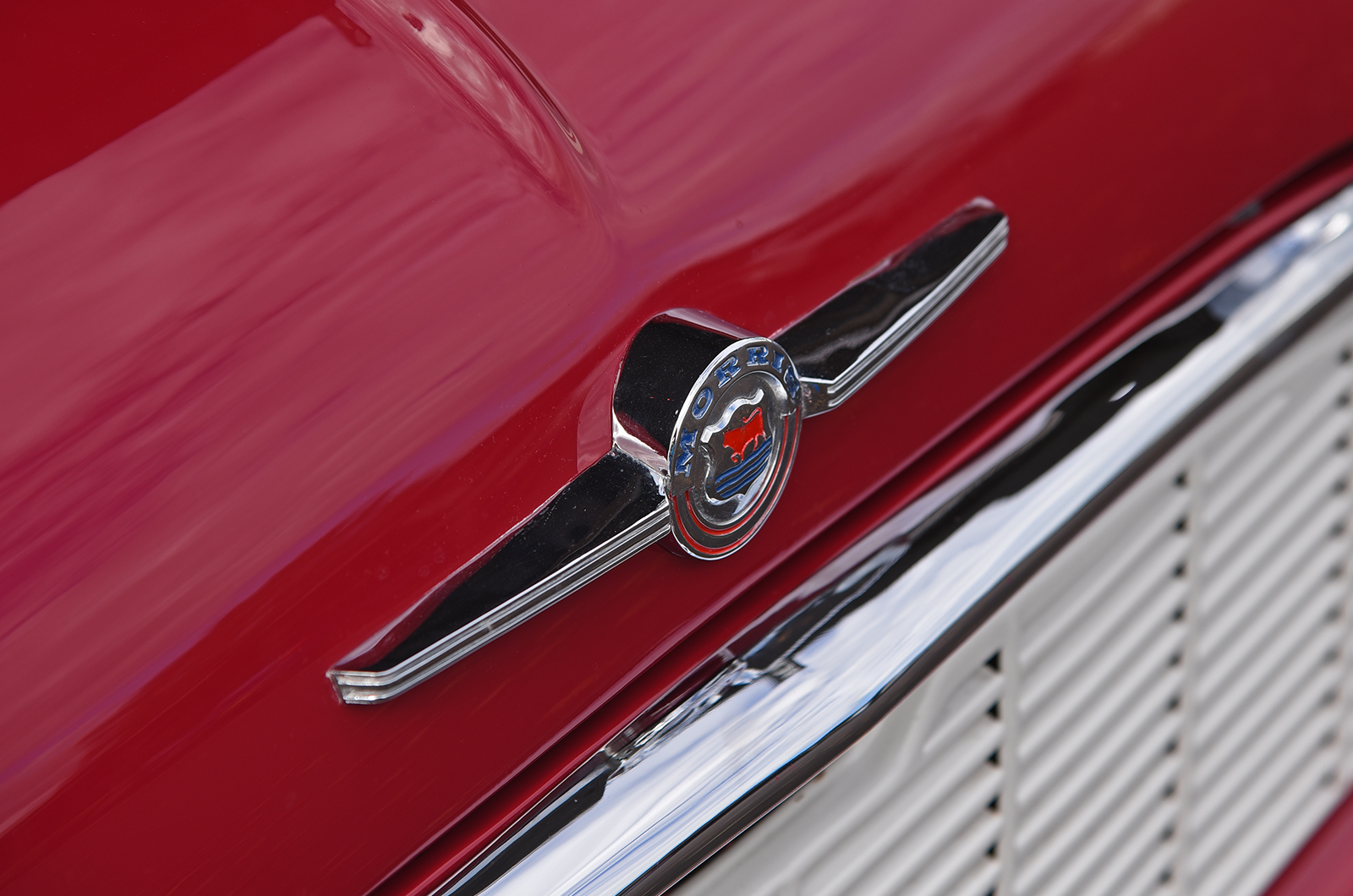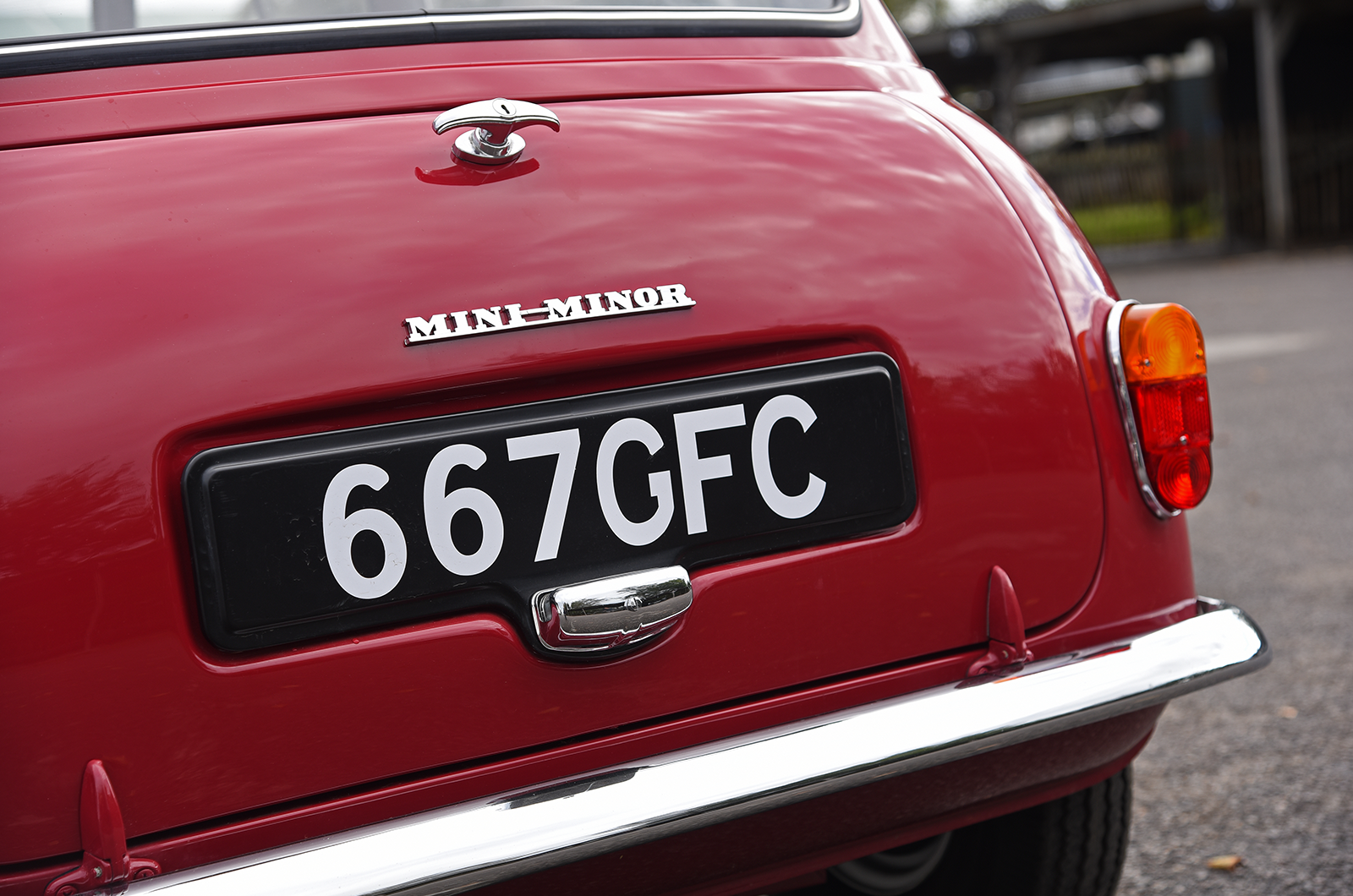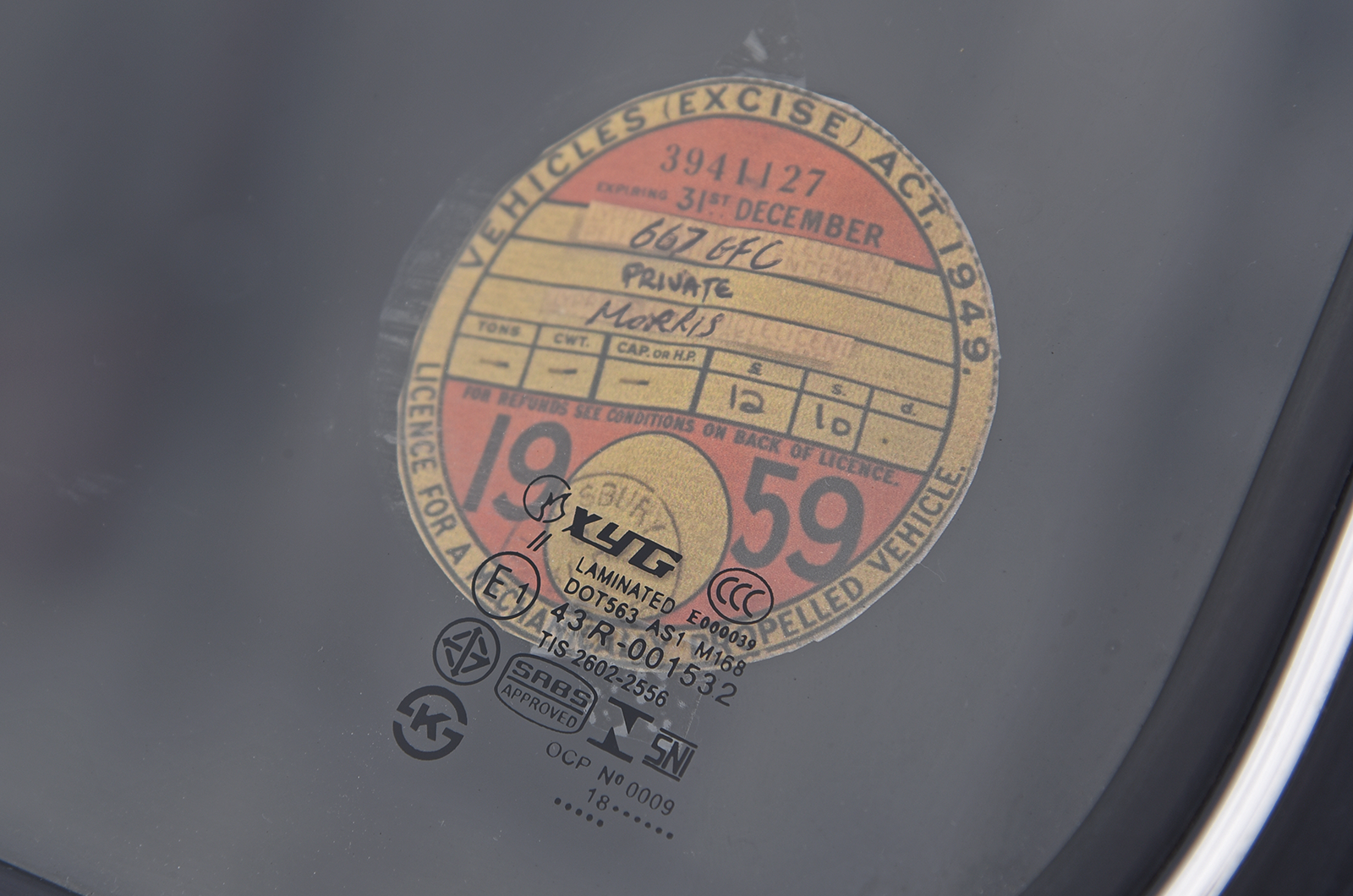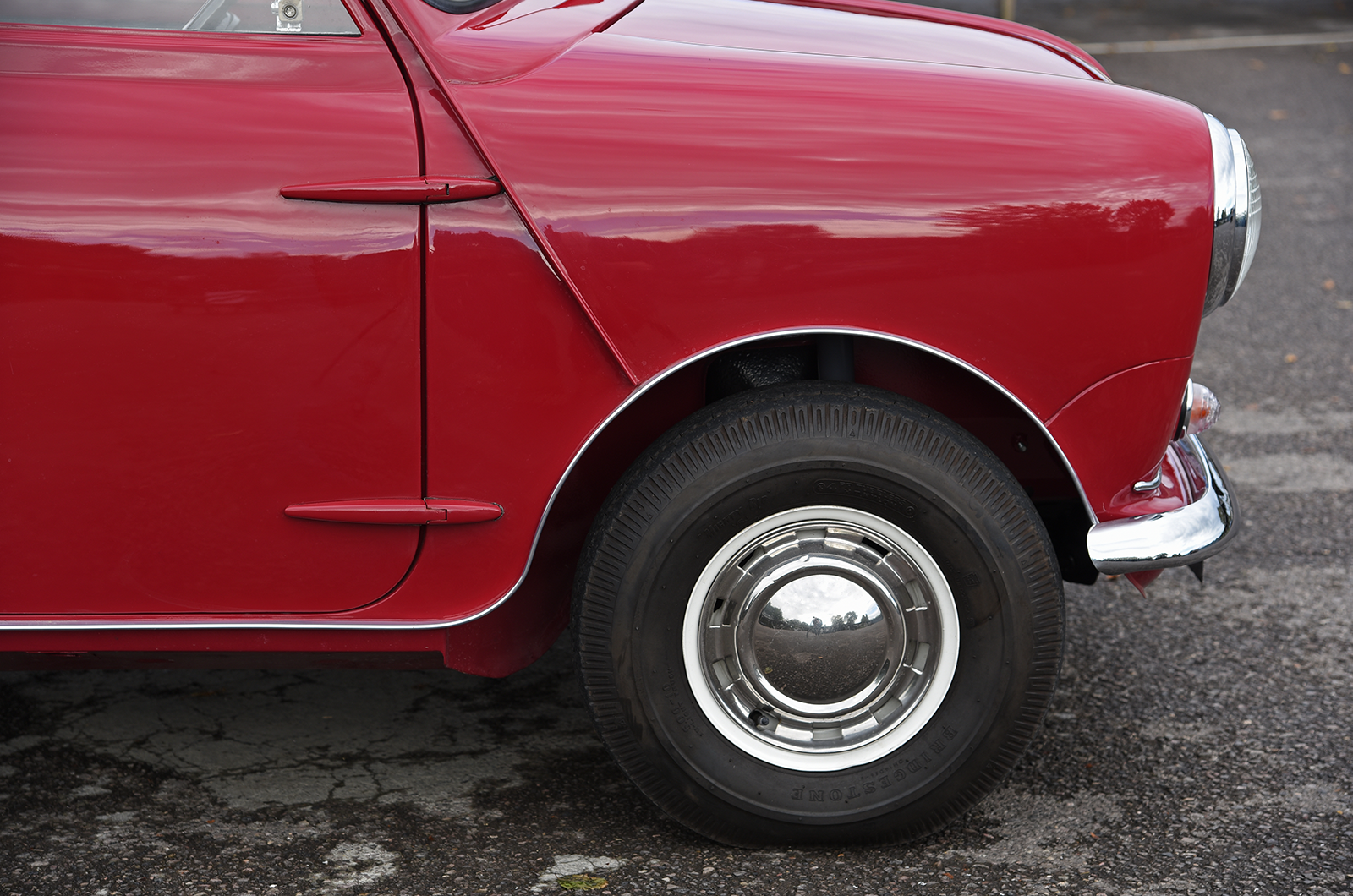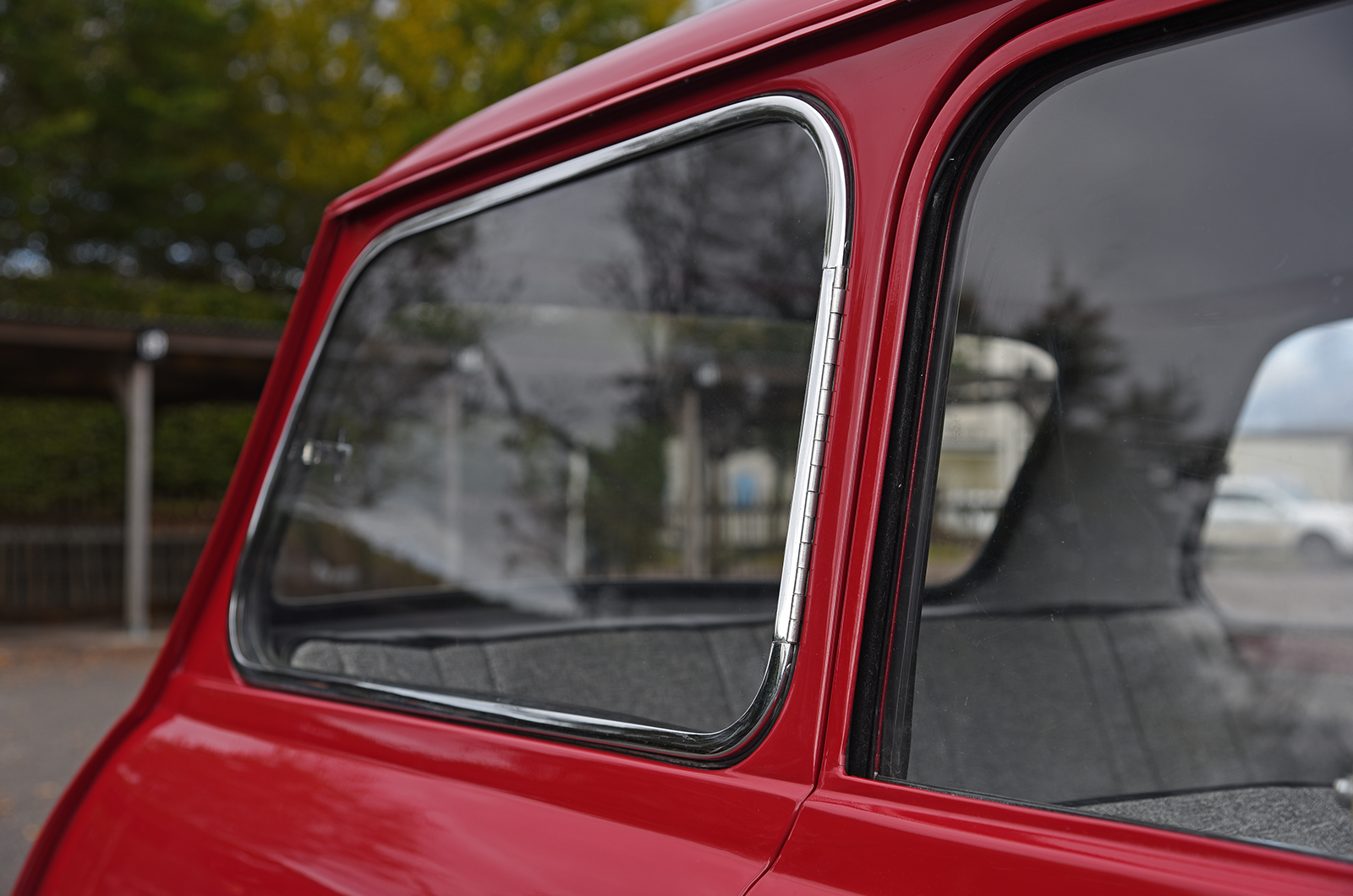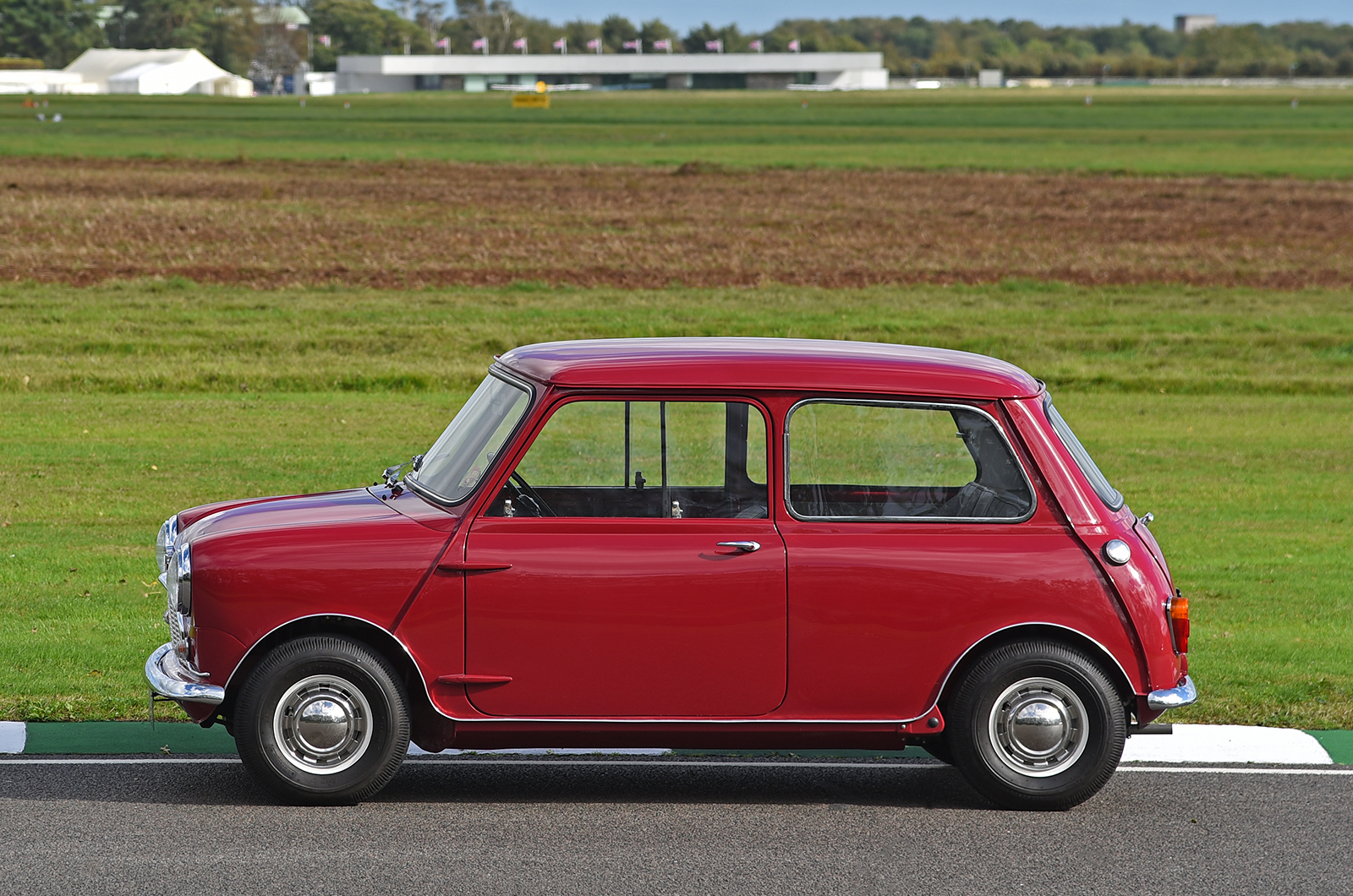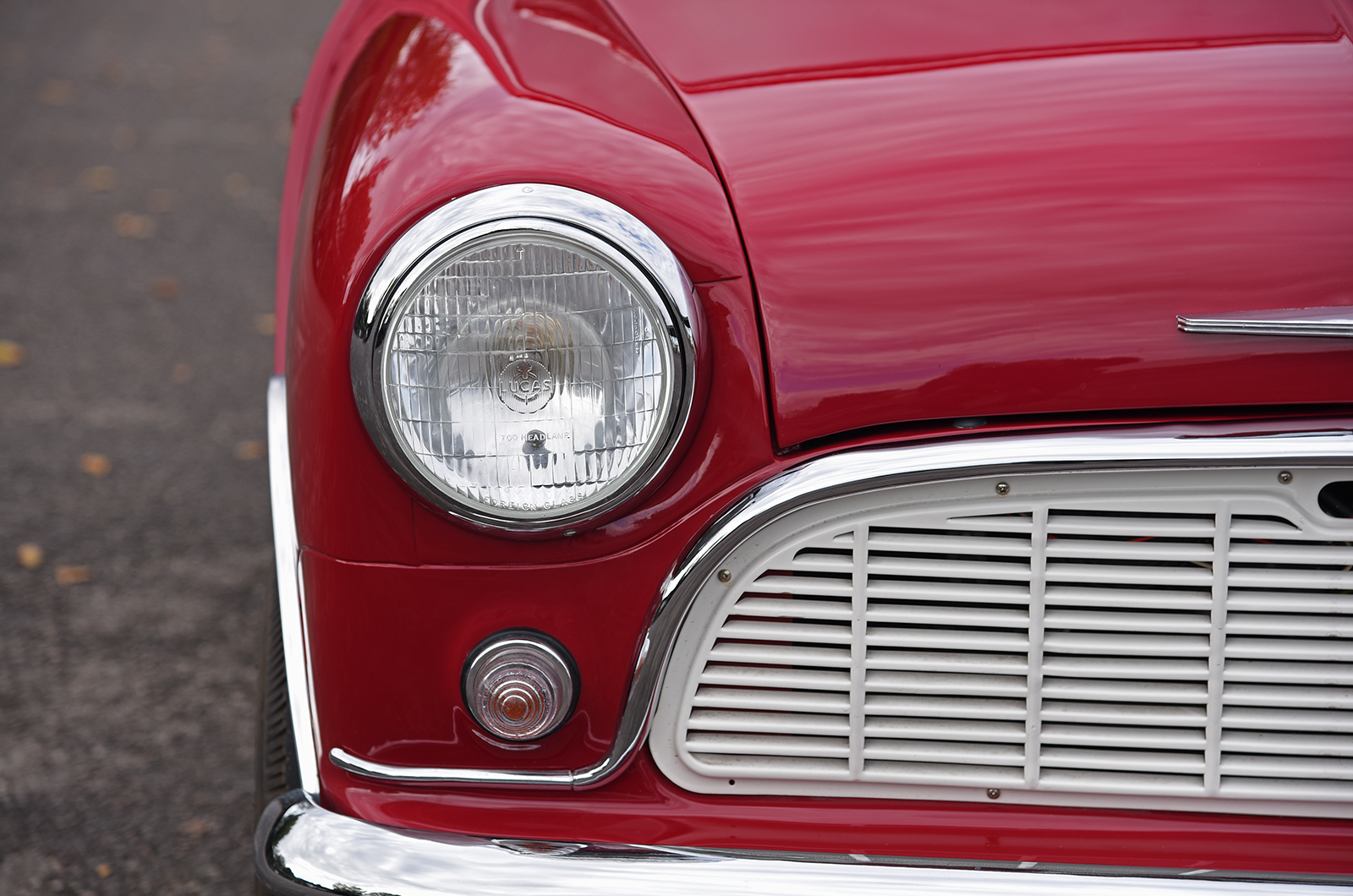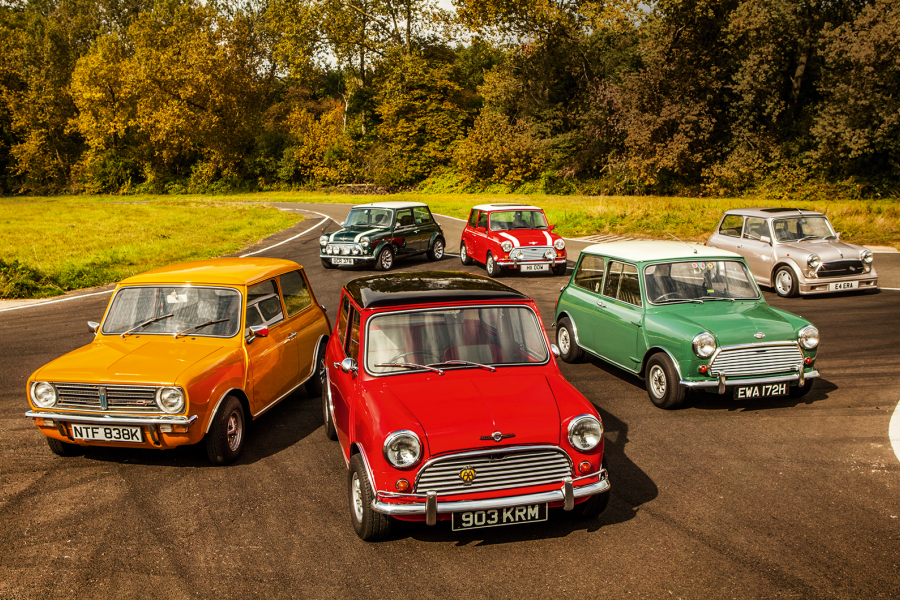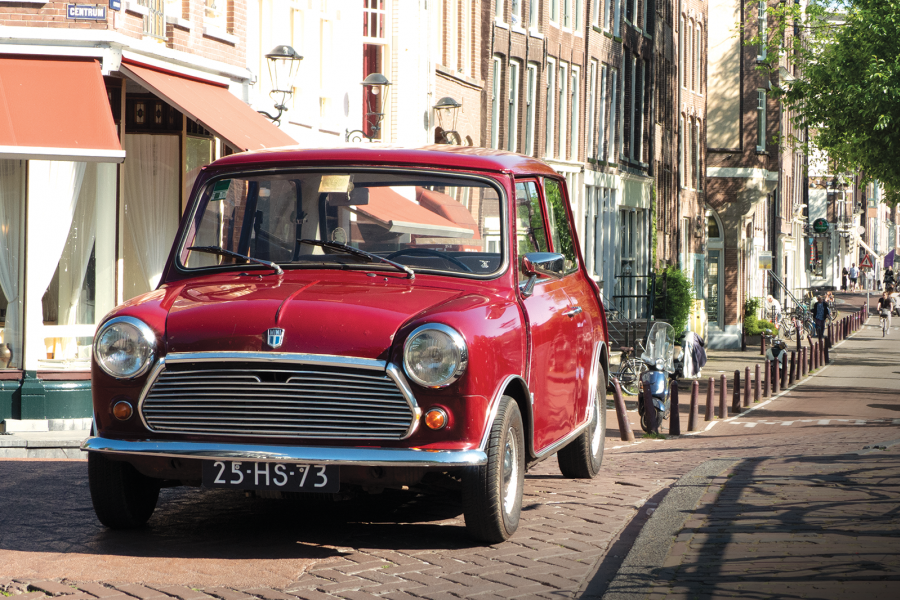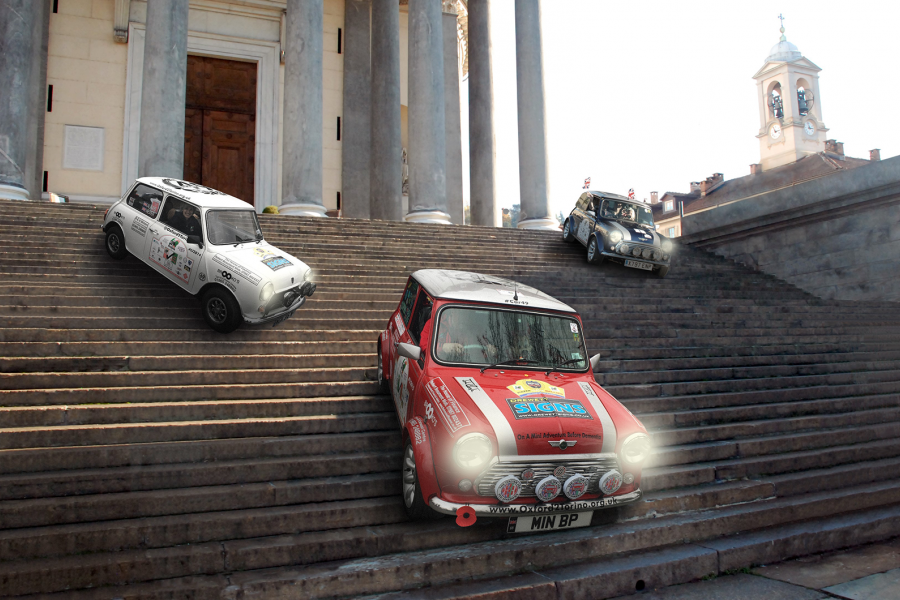Drivers were chosen from the ranks of professional journalists, among their number none other than Steady Barker and Paul Rivière, each of whom took the wheel of near-identical Minis to do battle with the likes of Motor Sport’s Bill Boddy and Autosport’s John Bolster.
A close race that was ‘as amusing as it was ingenious’ according to Motor Sport, the event pitched eight Morris Mini-Minors against eight marginally slower Austin Se7ens.
Steady Barker took the chequered flag an ace ahead of Roger Bell, each at the wheel of a Morris, with John Anstice-Brown coming in third, just a second ahead of John Bolster.
External door hinges are a recognisable feature on early Minis
Exactly who was driving what is now a mystery lost to time and fading memories, but the race programme offers a glimpse: of the Mini-Minors, just three were red and assigned to Bolster, Autosport chief photographer George Phillips and commentator James Tilling.
However, period photographs show Bolster behind the wheel of a white car, leading us to believe that 667 GFC was likely driven by Phillips or Tilling.
It’s with some excitement that the little 850 is fired up with a twist of the key and we take the first tentative steps on to Goodwood’s hallowed asphalt for the first time in more than half a century, slotting back into second with a wave of the wand and accelerating down the start/finish straight towards Madgwick.
The little Morris Mini-Minor is great fun on track – even if it never breaks 40mph
As someone who has only experienced later Minis, I’m surprised at how modern it feels, and how sprightly, despite a power output that would seem disappointing even for a moped.
Quickly making its way through the gears, 667 GFC buzzes along like a bee, as eager as it must have been in 1960, cheerfully devouring corner after corner.
Despite its age, the steering is sharp and direct, with a fleetness of foot from its short wheelbase and tiny wheels that makes it feel something like a go-kart – but with all the appointments you expect from a proper car.
This classic Mini’s relatively large glasshouse helps keep the inside light and airy
It also feels genuinely brisk, despite never breaking more than around 40mph.
By now I’m relishing the task, fizzing along behind the camera car and kissing each apex without a care for road positioning or the frantic hand gestures coming from photographer Williams.
But I’m quickly reminded of the car’s earlier life, as smoke begins to emanate from the dashboard accompanied by a rather rum smell.
The Mini’s steering still feels sharp and direct today
I pull over, fearing that I’m about to become the man who burned down a piece of Britain’s motoring heritage, but it’s nothing more than history repeating: the block is hot – probably for the first time since restoration – and is burning off sealant that has seeped from between the face and head.
No great drama, but it’s enough to recall early Minis’ propensity to overheat and a timely reminder to quit while we’re ahead.
We’ve only spent an afternoon with the car, but the thought of something happening to it brings on an almost physical pain.
Today this classic Mini appears box-fresh after its well-earned restoration
Not so much out of deference to the car’s significance, but because it’s that rarest of things: a survivor.
Having made it back in one piece after its 8127-mile adventure around the Mediterranean, then dicing with danger at the Members’ Meeting before travelling halfway around the world, it’s fair to say that 667 GFC has earned its gleaming restoration.
And probably a rest, too.
Images: Will Williams
Thanks to Goodwood and the 1959 Mini Register
READ MORE
25 cracking classic superminis
60,000 miles around the world in Minis
Children of the revolution: Deep Sanderson DS301 vs Ogle SX1000 vs Mini Jem vs Unipower GT
Greg MacLeman
Greg MacLeman is a contributor to and former Features Editor of Classic & Sports Car, and drives a restored and uprated 1974 Triumph 2500TC
